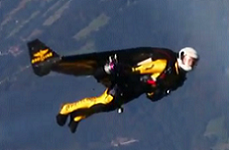- GD&T
GENERAL DIMENSIONING- International Paper Size Standards
- Technical Drawing Styles
- ISO And ANSI Projections
- ANSI Technical Drawing Views
- Technical Drawing Dimesioning Types
- ANSI and ISO Geometric Tolerancing Symbols
- Geometric Tolerancing Reading
- Taylor Principle Rule#1
- Form Tolerances
- Profile Tolerances
- Orientation Tolerances
- Location Tolerances
- Runout Tolerances
- TOLERANCES
ANSI AND ISO- Tolerancing and Engineering Standards
- Hole and Shaft Basis Limits And Fits
- ISO International System For Limits And Fits
- International Tolerance Grade (IT)
- Fundamental Deviations For Hole and Shaft Basis
- ISO Tolerance Band IT01-IT16
- Calculation Of International Tolerance
- Calculation of Upper and Lower Deviation For Shaft
- Calculation of Upper and Lower Deviation For Holes
- ISO Shaft Tolerances (3mm-400mm)
- ISO Shaft Tolerances (400mm-3150mm)
- ISO Hole Tolerances (3mm-400mm)
- ISO Hole Tolerances (400mm-3150mm)
- ANSI Standard Limits and Fits
- METAL CUTTING TECHNOLOGIES
- Terms and Definitions of the Cutting Tools
- Cutting Tool Materials
- Selection of Carbide to machine the work-part
- Identification System For Indexable Inserts
- Work-Part Materials
- Machinability and the specific cutting force
- Machinability of the Certain Material Evaluations
- Cutting Forces and Chip Formations
The tool minor cutting edge angle (end cutting edge angle): The tool minor cutting edge angle "κr1" is the acute angle that the minor cutting edge plane makes with the working plane assumed and is measured in the reference plane "Pr" . It can also be defined as the acute angle between the projection of the minor (end) cutting edge into the reference plane and the x direction (see in the figure of the tool angles-in-hand system). Angle "κr1" is always positive (including zero) and it is measured in a clockwise direction from the position of the working plane assumed.
Relief Angle: The flanks below the side cutting edge and the end cutting edge must be relieved to allow these cutting edges to penetrate into the work-part when taking a cut. If the flanks are not provided with relief, the cutting edges will rub against the work-part and be unable to penetrate in order to form the chip. Relief is also provided below the nose of the tool to allow it to penetrate into the work-part. The relief at the nose is usually a blend of the side relief and the end relief. If the relief angles are too large, the cutting edge will be weakened and in danger of breaking when a heavy cutting load is placed on it by a hard and tough material. On finish cuts, rapid wear of the cutting edge may cause problems with size control on the part. Relief angles that are too small will cause the rate of wear on the flank of the tool below the cutting edge to increase, thereby significantly reducing the tool life. In general, when cutting hard and tough materials, the relief angles should be 6 to 8 degrees for high-speed steel tools and 5 to 7 degrees for carbide tools. For medium steels, mild steels, cast iron, and other average work the recommended values of the relief angles are 8 to 12 degrees for high-speed steel tools and 5 to 10 degrees for carbides. Ductile materials having a relatively low modulus of elasticity should be cut using larger relief angles. For example, the relief angles recommended for turning copper, brass, bronze, aluminum, ferritic malleable for carbides. Larger relief angles generally tend to produce a better finish on the finish machined surface because less surface of the worn flank of the tool rubs against the work-part. For this reason, single-point thread-cutting tools should be provided with relief angles that are as large as circumstances will permit. Problems encountered when machining stainless steel may be overcome by increasing the size of the relief angle. The relief angles used should never be smaller than necessary.
Brazed Tool:A brazed tool is a cutting tool having a blank of cutting-tool material permanently brazed to a steel shank.
Indexable Insert Holder: Made of steel, an indexable insert holder is used to hold indexable inserts. It is equipped with a mechanical clamping device that holds the inserts firmly in a pocket or against other seating surfaces.
Indexable Inserts: An indexable insert is a relatively small piece of cutting-tool material that is geometrically shaped to have two or several cutting edges that are used until dull. The insert is then indexed on the holder to apply a sharp cutting edge. When all the cutting edges have been dulled, the insert is discarded. The insert is held in a pocket or against other locating surfaces on an indexable insert holder by means of a mechanical clamping device that can be tightened or loosened easily. Indexable inserts and tool holders are made with a negative rake or with a positive rake. Negative rake inserts have the advantage of having twice as many cutting edges available as comparable positive rake inserts, because the cutting edges on both the top and bottom of negative rake inserts can be used, while only the top cutting edges can be used on positive rake inserts. Positive rake inserts have a distinct advantage when machining long and slender parts, thin-walled parts, or other parts that are subject to bending or chatter when the cutting load is applied to them, because the cutting force is significantly lower as compared to that for negative rake inserts. Many materials, such as gray cast iron, form a discontinuous chip. For these materials an insert that has plain faces without chip-breaker grooves should always be used. Steels and other ductile materials form a continuous chip that must be broken into small segments when machined on lathes and planers having single-point, cemented-carbide and cemented-oxide cutting tools; otherwise, the chips can cause injury to the operator. In this case a chip-breaker must be used. Some inserts are made with chip-breaker grooves molded or ground directly on the insert. When inserts with plain faces are used, a cemented-carbide plate-type chip-breaker is clamped on top of the insert.
Right-hand Tool: A right-hand tool has the major, or working, cutting edge on the right-hand side when viewed from the cutting end with the face up. As used in a lathe, such a tool is usually fed into the work from right to left, when viewed from the shank end.
Left-hand Tool: A left-hand tool has the major or working cutting edge on the left-hand side when viewed from the cutting end with the face up. As used in a lathe
Chip-breaker: A groove formed in or on a shoulder on the face of a turning tool back of the cutting edge to break up the chips and prevent the formation of long, continuous chips which would be dangerous to the operator and also bulky and cumbersome to handle. A chip-breaker of the shoulder type may be formed directly on the tool.
Types of cutting
Orthogonal cutting is a type of cutting where the straight cutting
edge of the wedge-shaped cutting tool is at right angles to the direction of
cutting. Besides, the additional distinctive features of the orthogonal cutting
are:
(1) the cutting edge is wider than the width of cut,
(2) no side spread of the layer being removed occurs after its transformation into the chip,
(3) plane strain condition is the case, i.e. a single "slice” (by a plane perpendicular to the cutting edge)
of the model shown in Orthogonal Cutting figure above can be considered in the analysis of the chip formation model,
(4) the cutting edge does not pass the previously machined surface by this cutting edge,
So that there is no influence of the previous cutting passes on the current cutting pass.
This is not the case in tube end turning, which is often used to simulate orthogonal cutting,
because the temperatures and machining residual stresses built on the previous pass might
significantly affect the cutting conditions on the current pass. Moreover, this influence depends on
many cutting parameters like the rotational speed of the tubular work-part
(which defines the time difference between the two successive positions of the cutting edge and the intensity of the residual heat),
axial feed (which defines the machining residual stresses leave that the previous pass of the cutting tool) etc.
In the author’s opinion, this makes the end-tube turning unsuitable for simulating orthogonal cutting.
Oblique cutting is a type of cutting where the straight cutting edge of the wedge-shaped cutting tool
is not at right angles to the direction of cutting.
Free cutting is a type of orthogonal or oblique cutting when only one cutting edge is engaged in cutting.
Non-free cutting is a type of cutting where more than one cutting edge is engaged in cutting so that the
chip flows from the engaged cutting edges interact with each other.
Copyright ©2010-2023 Coban Engineering.All Rights Reserved.








